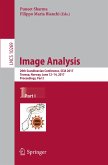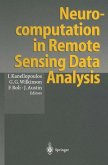The human visual system as a functional unit including the eyes, the nervous system, and the corresponding parts of the brain certainly ranks among the most important means of human information processing. The e?ciency of the biological systems is beyond the capabilities of today's technical systems, even with the fastest available computer systems. However, there are areas of application where digital image analysis systems produce acceptable results. Systems in these areas solve very specialized tasks, they operate in a limited environment, and high speed is often not necessary. Several factors determine the economical application of technical vision systems: cost, speed, ?exibility, robu- ness, functionality, and integration with other system components. Many of the recent developments in digital image processing and pattern recognition show some of the required achievements. Computer vision enhances the capabilities of computer systems - in autonomously collecting large amounts of data, - in extracting relevant information, - in perceiving its environment, and - in automatic or semiautomatic operation in this environment. The development of computer systems in general shows a steadily increasing need in computational power, which comes with decreasing hardware costs.
Bitte wählen Sie Ihr Anliegen aus.
Rechnungen
Retourenschein anfordern
Bestellstatus
Storno








